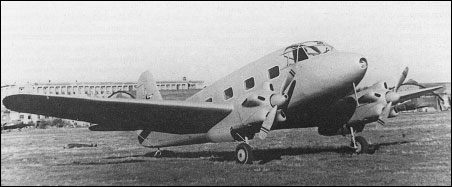 |
Yakovlev Yak-81944 |  |
| Virtual Aircraft Museum / USSR / Russia / Yakovlev | |
 |
Starting with the modified Yak-6, this enlarged transport was designed by a small team led by Oleg K Antonov, who both before and after the war had been a designer in his own right. The extra power of two 145hp M-11FM engines, driving VISh-327 propellers, enabled the fuselage to be made larger, to enable the main cabin to seat six passengers. The nose and rear fuselage were little altered, and the width of the central portion remained 1.24m, but its length was increased by 1m and the depth from 1.5 to 1.76m. This gave much better headroom, and access was simplified by fitting a large door on the left behind the wing. The cabin had four windows on each side. It was strengthened with box frames 80mm deep, with 2mm ply skin throughout. The tail was enlarged, with straighter edges. The prototype was painted in VVS markings and began Factory testing in early 1944. It subsequently passed NII-VVS evaluation, with a recommendation for production, but like the Yak-5 it was eventually decided that future aircraft should be all-metal. The ASCC allocated the name 'Crib'.
|  COMPANY PROFILE | ||||||||||||||||||||||||||||||||||||||
 |

|
